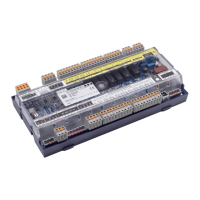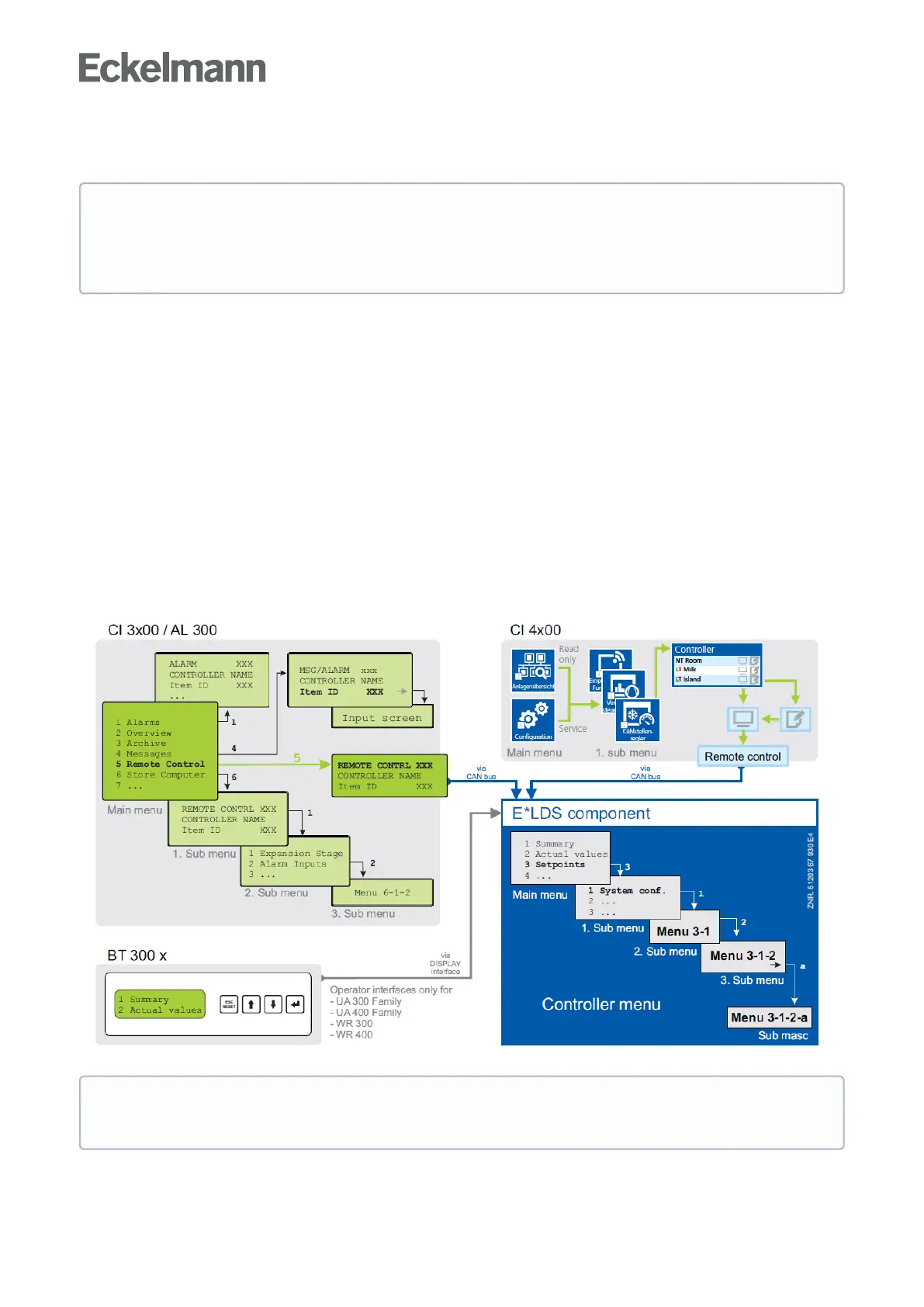8.3.1 Menus and operating screens
Numbering of menus and screens:
Every menu in the menu tree can be reached using a specific number and every operating screen in a menu
can be reached using a specific selection in the menu. This is identified in the operating manual by a unique
identifier of digits (and letters if necessary) in the menu tree (e.g. Menu 3-1-2-a). Thereby, the digits 1, 2, ..
stand for the identification of the corresponding menu, and the letters a, b, .. stand for the sequence of the
corresponding operating screens in the menu.
Example for the numbering of a menu / screen
Any reference to, for example Menu 3-1-2 in the operating manual means that the required menu of the
E*LDScomponentiscalledbyenteringthedigitsorselectionof"3-1-2"viatheremotecontrolinthesystem
centre,storecomputeroroperatorinterface.Themenuitem"Remotecontrol"istheinterfacefortheE*LDS
controller;seechapterCalling the controller menu via remote controlfordetails.
If any letter is appended (e.g. Menu 3-1-2-a), this means that another submenu (operating screen or
selectionlist)canbereachedusingthecursorrightbutton(→).Thelettersindicatetheirsequenceinthe
screen.
If any menu or operating screen consists of more lines than are possible in the display, scrolling is possible
usingthecursorbuttons(↑)and(↓).
If the system centre, store computer or operator terminal remain locked down, settings on the
controller are read-only. Changes and inputs are not possible. However, if any parametrisation is
required, the lock-down for the input must be removed first, see chapter Lock-down of the setpoint
change.
In contrast to the system centre, store computer or operator terminal, the menu of the controller is
displayed directly on the operator interface.

